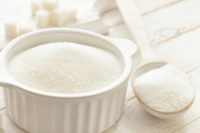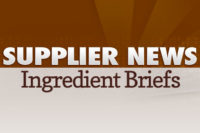
In today’s economy, a Darwinian belief in the “survival of the fittest” holds very true, even in the candy industry. Nowhere is this truer than in the sugar-free category. Over the years, alternative sweeteners have come and gone, leaving the strongest contenders to dominate the marketplace as consumer interest in “better-for-you” escalates.
That said, there’s no substitute for taste.
“Sugar-free confections have changed over the years by no longer having an unpleasant aftertaste,” notes Susan Rosenthal Jay, vice president of marketing/exports for Hillside Candy. Today, “flavor profiles can be matched to sugar-based candies.”
Interest in these products “has grown to include not only those who need sugar-free candy because of diabetes or weight reduction, but also includes those who want a treat, but without the sugar,” she adds.
This demand is being driven further by Michelle Obama and the “Let’s Move” campaign, Rosenthal notes.

Perhaps as a result of attention to diabetes, childhood obesity and the overall health of the nation, “sugar-free confections are no longer the afterthought of the industry,” says Dan Werther, ceo of Sorbee International.
On the contrary, sugar-free is top of mind for many, and the number of sugar substitutes available to manufacturers is growing.
Of these,Splenda (a brand of sucralose) is the most celebrated. The “no-calorie sweetener” comes in a variety of forms for use both commercially and at home. Its popularity extends to sugar-free confections enjoyed by diabetics, consumers on restricted diets and the health-conscious.
Parents will be happy to hear that Bazooka Candy Brands, a division of Topps, Inc., is unveiling a sugar-free version ofRing Pop, its bestselling candy for kids, sweetened withSplenda. The product will come in three flavors - blue raspberry, watermelon and strawberry - and roll out at Wal-Mart and other retailers nationwide beginning this spring.

Then there areSunkist brand hard candies from Healthy Food Brands, which boast “the authentic taste of all-natural fruit flavors sweetened withSplenda and made with natural fruit juice.” (HFB also marketsSunkist brand reduced-sugar gummy fruit snacks as well as itsSweet N’ Lowhard candies made with natural and artificial sweeteners.)
Splenda,Sunkist,Sweet N’ Low… When it comes to promoting sugar-free products, as Werther points out, branding is key.
“We always say that sugar-free consumers are no different than any other consumer and deserve to buy the best brands like anyone else,” he notes.
EnterCrystal Light, which got its start as a sugar-free beverage brand. Today, Sorbee offersCrystal Lightbrand sugar-free hard candies made withSplenda and, now, a new chewy sugar-free candy that has “the same look and feel as the full-sugar version,” Werther says.
Capitalizing on the power of theCrystal Light name, Sorbee positions its products in the regular candy aisle where they can really stand out.
“That is where we are and need to be,” he states.

Perhaps best-known for itsToo Tarts candy sprays for kids, Innovative Candy Concepts is introducing a new sugar-free product aimed at adults.CHEATERS Squeeze Candy is sugar-free, fat-free and guilt-free, according to packaging. It contains just 11 calories per pack and is available in four dessert-inspired flavors: Strawberry Cheesecake, Blueberry Cobbler, Banana Creme Pie and Cinnamon Apple Pie.
Although ICC President and CEO Armand Hammer jokes thatCHEATERS are sweetened with “love,” they also contain sucralose. In fact, ICC”s entire candy line is sugar-free, and has been since 2003, the company notes.
“The market has never been more ready for no-guilt candy,” Hammer says. “For some reason, the big companies have not offered single-serve bars that taste good, are truly no guilt and are competitively priced. … There certainly is a greater need than ever for healthier alternatives.”
“I think the sugar-free and no-guilt category certainly can explode if manufacturers make products the right way,” he continues. “Sooner or later, companies that do will have a huge market opportunity.”
LikeToo Tarts,CHEATERS will be sold at the checkout, but also in the sugar-free diabetic section of the store.

Natural Selections
Artificial sweeteners aside, natural sweeteners also play a role in the marketplace.For example, there’s sorbitol (also known as glucitol), a sugar-alcohol that’s obtained by reduction of glucose.
Eda’s SUGARFREE, which has been producing sugar-free hard candy since 1957, utilizes sorbitol in its products “because it is natural, proven and safe,” says company President Brian Berry. Recently added flavors from theEda’s SUGARFREEbrand include mango, popcorn, bubble gum and grapefruit. At this year’s Sweets & Snacks Expo, new Cola, Cotton Candy and Caramel varieties will join that list.
Then there’s all-natural xylitol (a sugar-alcohol sweetener), an additive used in mints and chewing gum for its dental properties.
“Over 25 years of testing in widely different conditions confirm that xylitol is the best sweetener for teeth, “states www.xyloitol.org. “Xylitol use reduces tooth decay rates both in high-risk groups (high caries prevalence, poor nutrition, and poor oral hygiene) and in low risk groups (low caries incidence using all current prevention recommendations). Sugarfree chewing gums and candies made with xylitol as the principal sweetener have already received official endorsements from six national dental associations.”
One of the newest natural sweeteners on the market is stevia, “a South American herb that has been used as a sweetener by the Guarani Indians of Paraguay for hundreds of years,” according to www.stevia.com. “The leaves of this small, greenStevia rebaudiana plant have a delicious and refreshing taste that can be 30 times sweeter than sugar.”
“Stevia has many excellent properties,” the site asserts. “The body does not metabolize the sweet glycosides from the stevia leaf or any of its processed forms - so there is no caloric intake. Stevia doesn’t adversely affect blood glucose levels and may be used freely by diabetics.”
It remains to be seen how stevia will impact the candy industry, but interest in natural sweeteners is growing, as are introductions in the sugar-free arena as a whole.
As Darwin tells us, only the strongest will survive.

Sugar-Free Chocolate Flavor
Everyone needs a chocolate fix once in awhile, and thanks to the growing number of chocolates being made with alternative sweeteners, now even diabetics and those on restricted diets can enjoy a taste.“Sugar-free chocolates are enjoyed by many different types of consumers,” notes Ryan Bowling, spokesperson for Mars Chocolate North America.” They are a good option for well-controlled diabetics who are working closely with a health professional to manage their blood glucose.”
In July of 2006, Mars began catering to this segment of the population withDOVE Sugar Free, sweetened with maltitol (a sugar alcohol). Until recently, the line offered only in three dark chocolate varieties: Chocolate Crème, Raspberry Crème and Mint Crème. In April, Mars introduced its first sugar-free milk chocolate offering:DOVE Sugar Free Milk Chocolate with Peanut Butter Crème, which allows consumers to “spare the sugar, not the decadence.”
“At just 38 calories per piece, this total chocolate experience will prove irresistible to sugar-conscious consumers,” Bowling states.

Sorbee attracts said audience members with its Sorbee brand sugar-free Fine European Chocolate in both milk and dark chocolate varieties. The 2.8-oz. Splenda-sweetened bars contain 0 sugar carbs, but still offer that quick fix consumers crave.




